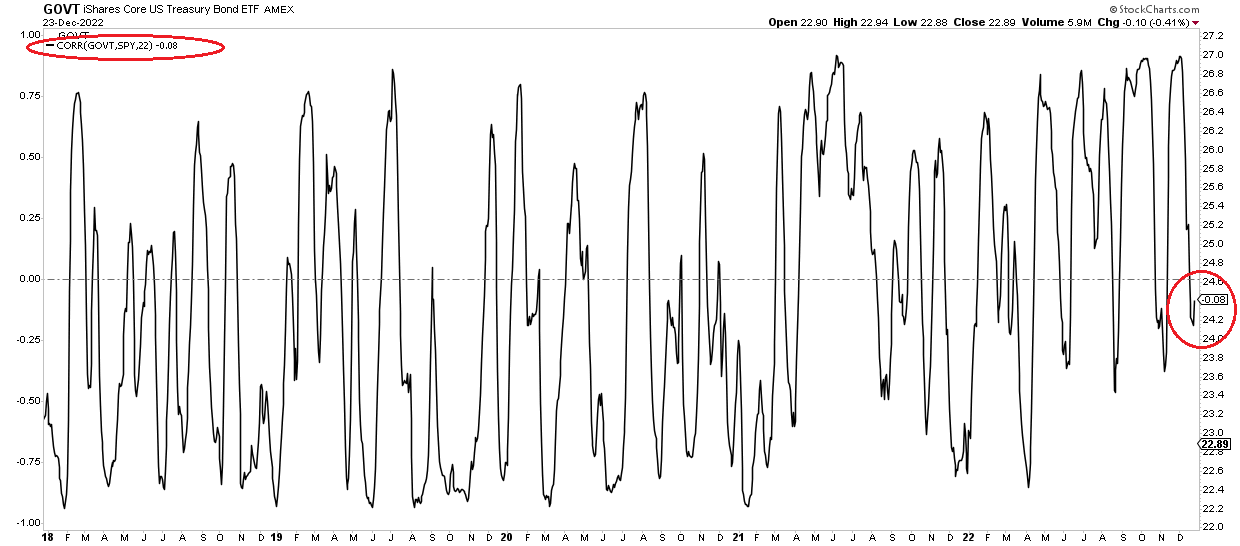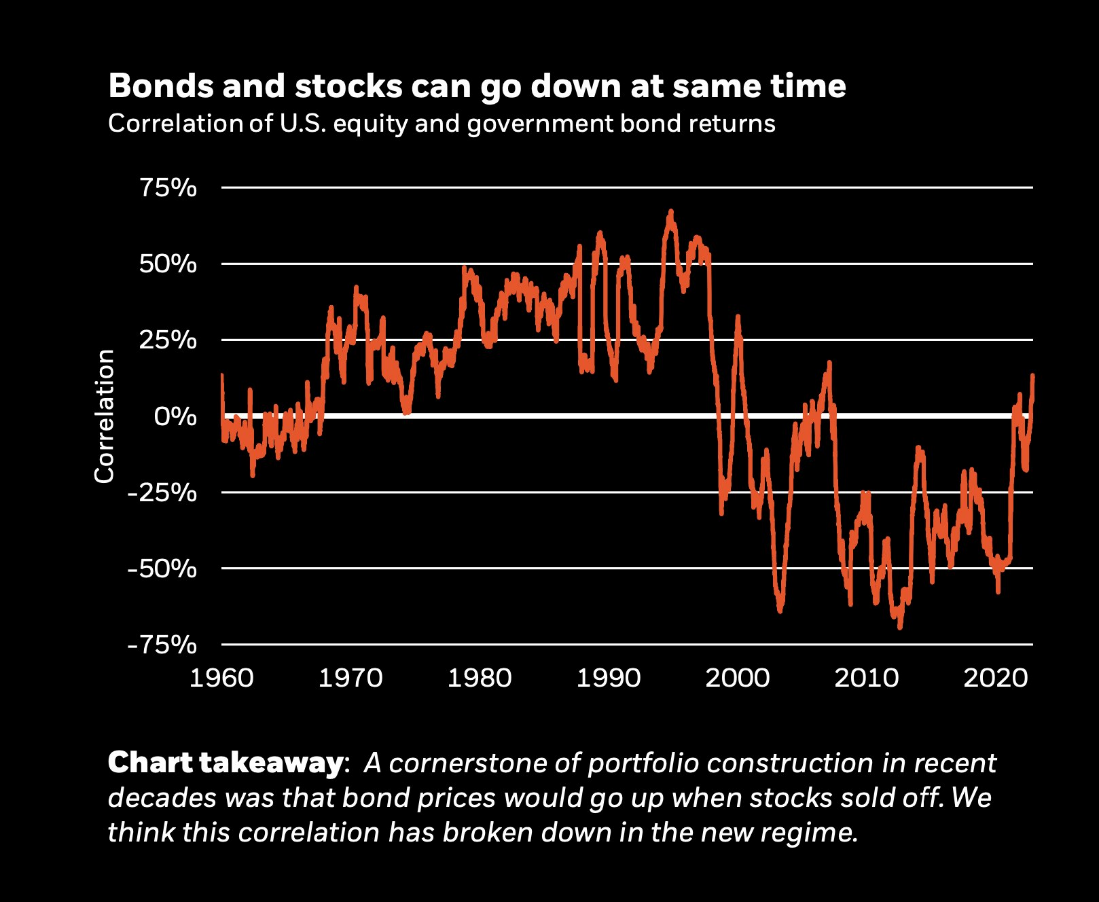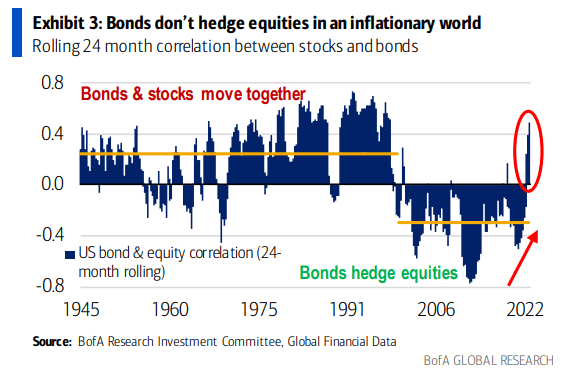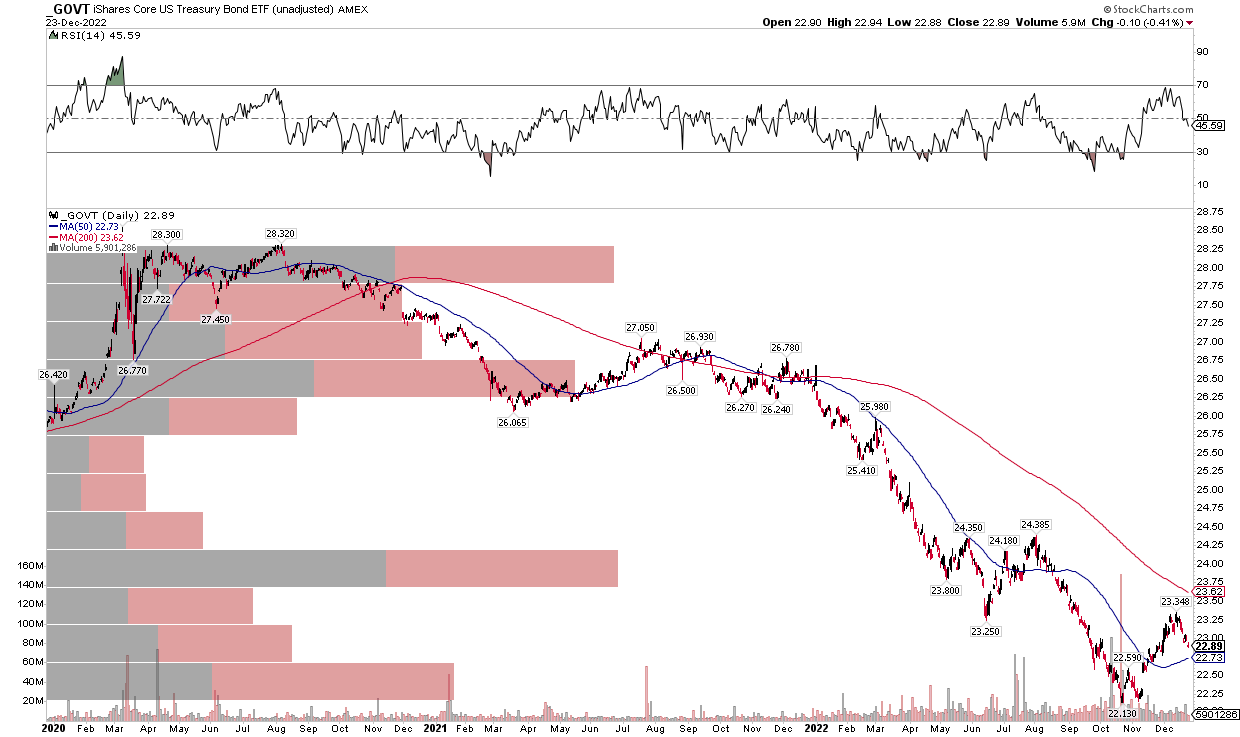- As stocks sink back toward the October lows, yields are not quite as high as they once were
- Inflation concerns are progressing toward recession fears, which may cause a divergence in the performance between equities and Treasury bonds
- The diversification benefits of a classic 60/40 allocation should work better in a lower-inflation regime next year
A major investing theme that impacts short-term and long-term investors alike was a frustrating lockstep movement between the S&P 500 and Treasury bonds in 2022.
It used to be that owning a portfolio of bonds, mainly default-risk-free T-notes and the ‘long bond’, would help buffer against volatility in equities.
That wasn’t the case in 2022, as stocks often fell when interest rates rose. Hot CPI reports, hawkish Fed statements, stubbornly high consumer spending, and nominal wages sent the bond market into a tizzy time after time.
Recently, though, the ‘40’ part of many folks’ portfolios has once again offered some relief from volatile and downward-trending stocks at times. Is that a near-term blip or theme that could persist?
The chart below illustrates that US equities and government fixed income are diverging ever so slightly in performance.

Source: Stockcharts.com
Many Forecasters See Longer-Term Rising Correlations Between Equities & Treasury Securities

Source: Blackrock
While Blackrock sees a new stock/bond environment, I expect traders’ minds to shift from inflation jitters to recession realities as we venture into 2023, leading to a negative correlation.
Weak manufacturing data, a quickly softening household employment picture, and tame 3-month annualized inflation gauges suggest the Fed might not orchestrate a soft landing but rather lead the economy into a mild contraction at times during 2023.
That will likely lead to softer interest rates and cyclical macro risks overriding inflation fears. Treasury bonds zigging while equities zag would be a positive, particularly now that yields are much higher than just a year ago.
For investors continuing to buy into a diversified portfolio, I assert that the next year should be easier to endure if we continue to see a shift away from a tightly positive stock-bond correlation.
A Return to the Old Regime?

Source: BofA Global Research
It remains to be seen if the investing climate looks more like that of the 1945-1995 period in which both asset classes moved together. Bonds and stocks moved together as the US economy generally featured higher growth with sustained inflation.
From the late ‘90s through the early part of the pandemic, deflation was more of a risk than uncomfortably high inflation – that trend promoted diversification benefits between stocks and high-duration Treasury securities.
GOVT: Downtrend Persists

Source: Stockcharts.com
The chart of the iShares US Treasury Bond ETF (NYSE:GOVT) still has work to do, however. There’s obviously no uptrend here.
Moreover, earlier this month, the bulls were rejected at the $23.25 to $23.35 range. I would like to see GOVT rise back above that peak from two weeks ago, along with recapturing its 200-day moving average.
The Bottom Line
While many sell-side strategists continue to pronounce the 60/40 dead, I see diversification working better in 2023, given higher starting yields in Treasury bonds, lower inflation risks, and elevated economic growth concerns.
Disclaimer: Mike Zaccardi does not own any of the securities mentioned in this article.
